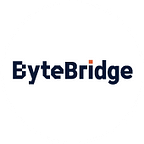Self-Driving Cars at WAIC 2021
Auto Driving Becomes a Hot Spot
If you want to ask what is the biggest highlight of WAIC Pavilion this year, “Autopilot” will be the common answer for many visitors and exhibitors.
For a long time, the application of artificial intelligence in the automobile field is the focus of global innovation and future development. In this field, Chinese domestic manufacturers have always been at the forefront. At WAIC 2021, various new intelligent driving products are in full bloom, which indicates that AI ushers in blowout development in the field of automatic driving.
On the afternoon of July 6, China’s unmanned vehicle company AutoX held a conference in Shanghai, bringing its fifth-generation all unmanned driving system, AutoX gen5. At the conference, AutoX officially announced the Chinese Name: Antai(Peaceful Journey). Founder Xiao Jianxiong said at the conference that AutoX should keep developing driverless technology and Robotaxi.
It is reported that AutoX launched the core computing platform of the fifth generation system, and the first L4/L5 unmanned driving computing platform, AutoX XCU, in China. The latest fifth-generation system has reached an amazing 2200 TOPS computing force, which represents the highest Chinese vehicle supercomputing power.
During the 2021 WAIC world AI conference, Shangtang technology also officially released the new independent brand Senseauto solution, which displays the commercial solution of intelligent vehicles in all directions.
In addition, the Pony.AI announced that it would open the Robotaxi business in Jiading, Shanghai, covering the main urban section. Thanks to the Ponypilot+ app, users have the opportunity to experience safe and comfortable emerging travel modes. The vehicles that are put into service are the Lexus RX models equipped with the latest automatic driving system.
In addition, for the first time, the company disclosed details of its business operation. On May 11, PonyTron announced that it was officially issued the road transportation license for commercial operation. Till now, the automatic driving truck has completed about 13,650 tons of freight transportation, with a commercial operation mileage of 37,466 km.
On the other hand, Inceptio Technology also shows 2 mass-production models of the automatic driving heavy trucks; The Q-Truck, the unmanned electric truck of Westwell, directly removed the human cab and was used in LAEM CHABANG, Thailand; The L4 level automatic driving truck of TuSimple has been used between Shanghai port and Yangshan Port; The autonomous parking technology demonstrated by WM Motor shows the possibility of AI technology in travel.
Undoubtedly, the development of China’s automatic driving is in the dominant position in the world, and the ecological system is gradually being established and perfected. In the future, the intelligent transportation system constructed by “smart cars” and “smart roads” will further reduce traffic accidents, improve the probability of safe passage and reduce carbon emissions.
The 2021 world AI conference has come to an end, and the competition among all parties in the exhibition hall has also been concluded. Undoubtedly, in the third decade of entering the 21st world, China has been accelerating the development of the artificial intelligence industry and has made gratifying achievements. But as Dr. Zhang Yu, CTO of the Internet of things of Intel, mentioned in his speech, the current AI still relies on human resources, which has caused restrictions to some extent. In the future, with the joint efforts of the industry chain, artificial intelligence will further quickly iterate, and help achieve the goal of digital transformation and carbon neutralization.
Self-driving algorithm model and High-quality Labeled Data
The mainstream algorithm model of autonomous driving is mainly based on supervised deep learning. It is an algorithm model that derives the functional relationship between known variables and dependent variables. A large amount of structured labeled data is required to train and tune the model.
On this basis, if you want to make self-driving cars more “intelligent”, and form a closed loop of the business model for self-driving applications that can be replicated in different vertical landing scenarios, the model needs to be supported by massive and high-quality real road data.
In the field of autonomous driving, data annotation scenes usually include changing lanes and overtaking, passing intersections, unprotected left and right turn without traffic light control, and some complex long-tail scenes such as vehicles running red lights, pedestrians crossing the road, and roadsides as well as illegally parked vehicles, etc.
End
Outsource your data labeling tasks to ByteBridge, you can get the high-quality ML training datasets cheaper and faster!
- Free Trial Without Credit Card: you can get your sample result in a fast turnaround, check the output, and give feedback directly to our project manager.
- 100% Human Validated
- Transparent & Standard Pricing: clear pricing is available(labor cost included)
Why not have a try?
